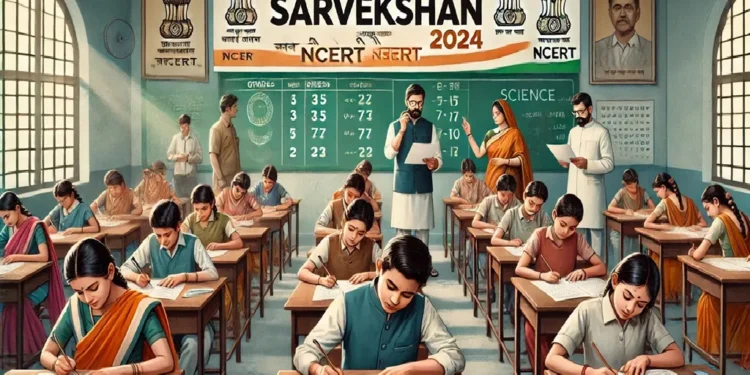Bhubaneswar- Odisha’s school students have outperformed the national average in learning outcomes across key grades, according to the recently released PARAKH Rashtriya Sarvekshan-2024 by the Ministry of Education. The assessment, which covered language, mathematics, science, and social science for students in Grades III, VI, and IX, shows encouraging academic progress, particularly among girls.
The report, conducted by NCERT’s National Assessment Centre on December 4 last year, evaluated 96,054 students from 3,839 schools—both government and private—in all 30 districts of Odisha. Notably, Odisha ranked among the top 10 states in overall performance across all three grades, alongside states like Punjab, Kerala, Rajasthan, and Himachal Pradesh.
In Grade III, the performance of Odisha’s students in language and mathematics was 1% higher than the national average of 64%. What’s impressive is that students from government schools performed equally well as those from private schools, showing proficiency in reading comprehension, word recognition, and basic math skills.
At the Grade VI level, students showed strong command in language, scoring 64% compared to the national average of 57%, and did notably better in mathematics (51% vs. 46%) and environmental studies—termed “The World Around Us”—scoring 54% against the national average of 49%.
For Grade IX students, performance in language, mathematics, science, and social science was consistently 3–5% above national averages, indicating a positive trend in higher grade academic performance as well.
Gender-wise, girls outperformed boys and surpassed the national average in all subjects across all grades, while boys’ performance remained on par with national trends.
The report also highlighted district-level disparities. While Angul and Kalahandi were listed among the top 50 performing districts in India, Malkangiri and Gajapati lagged behind, ranking among the lower-performing regions in all three grades.
An encouraging insight from the study is that 97% of surveyed schools reported using a variety of teaching techniques, indicating widespread adoption of innovative pedagogy. However, there remains a gap in vocational and skill-based education. Although half of the schools offer skill development courses from Grade IX onwards, only 21% of students participate, suggesting a need for greater emphasis and awareness in this area.
In summary, the PARAKH-2024 findings mark a positive academic trajectory for Odisha’s school system, while also pointing to areas needing focused attention such as skill education and regional equity.






